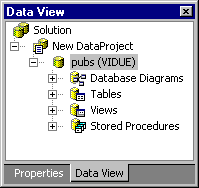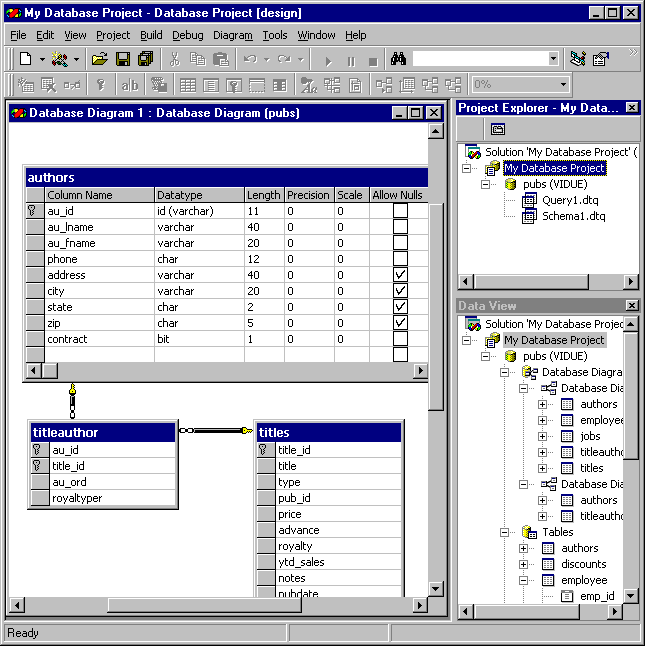
You can access Microsoft® Visual Database Tools from your development environment to help create and manage data-driven applications that rely on live connections to Microsoft® SQL Server™ databases. The Query Designer enables you to use visual tools to build SQL statements that retrieve data or modify the contents of tables. The Database Designer graphically represents tables and their relationships and enables you to create and modify the database objects that your application relies on. All this can be done while you’re connected to the underlying database. Thus, you can design, query, and populate your databases from within the design environment that you use to build your application.
With Microsoft Visual Database Tools, you can:
Microsoft Visual Database Tools are available in Microsoft® Visual InterDev™ 6.0, Microsoft® Visual J++™ 6.0, Microsoft® Visual C++® 6.0, and Microsoft® Visual Basic® 6.0 Enterprise Editions. To use Visual Database Tools, you first create a Web project or database project, and then add a database connection to that project.
For details about creating a database project, see Creating a Database Project.
For information about creating a Web project in Microsoft Visual InterDev, see the section "Creating Web Projects" in the Microsoft Visual InterDev online help.
Microsoft Visual Database Tools is made up of four components:
This combination of database design tools provides a complete, tightly integrated database-development and administration tool for developers.
The specific functionality available in each component depends on the database server you are using. For more information about the differences between database servers, see Database Server Considerations.
The Data View component provides a visual interface in which you can view:

For more information, see Managing Databases in Data View.
The Database Designer provides a graphical environment in which you can:

For more information, see Database Designer.
The Query Designer provides four different ways for you to construct and execute queries against any ODBC-compliant database. You can:

For more information, see Query Designer.
The Source Code Editor enables you to:
For more information about editing stored procedures and triggers, see Stored Procedures and Triggers.